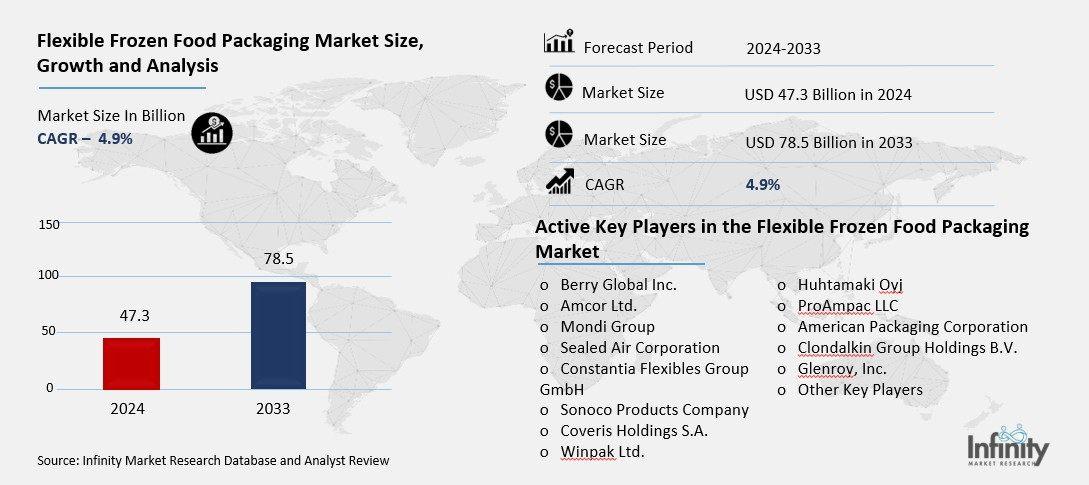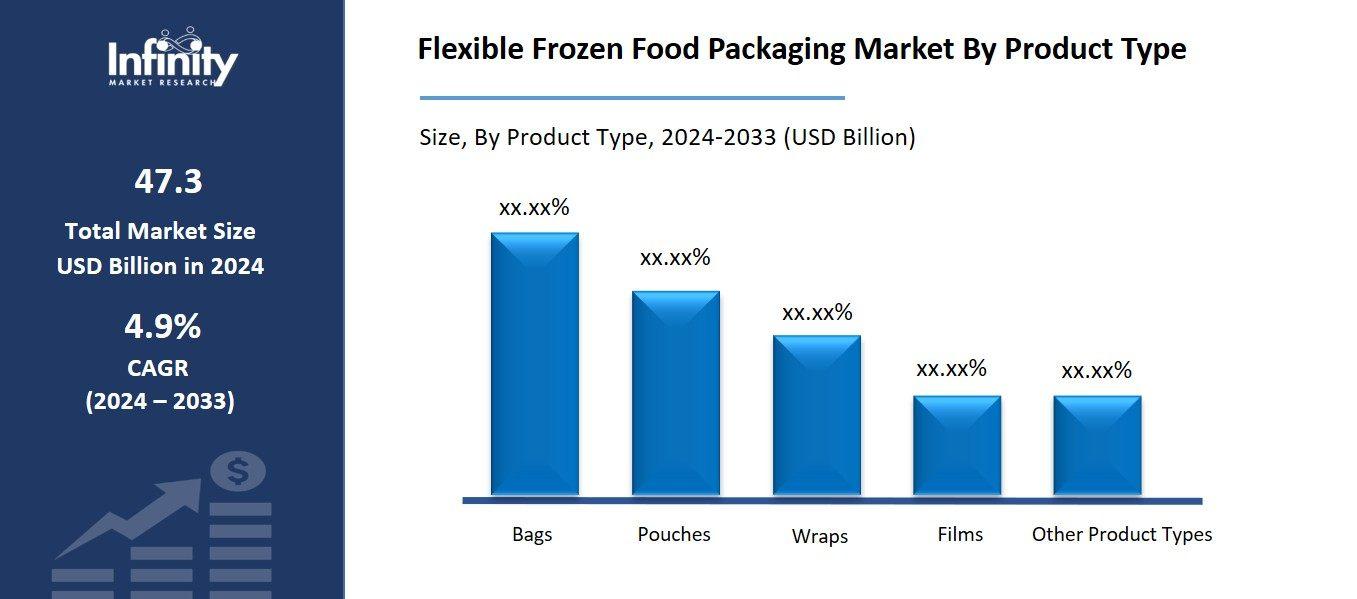
🔐 Secure Payment Guaranteed
Safe checkout with trusted global payment methods.
🌟 Why Choose Infinity Market Research?
At Infinity Market Research, we dont just deliver data — we deliver clarity, confidence, and competitive edge.
In a world driven by insights, we help businesses unlock the infinite potential of informed decisions.
Here why global brands, startups, and decision-makers choose us:
Industry-Centric Expertise
With deep domain knowledge across sectors — from healthcare and technology to manufacturing and consumer goods — our team delivers insights that matter.
Custom Research, Not Cookie-Cutter Reports
Every business is unique, and so are its challenges. Thats why we tailor our research to your specific goals, offering solutions that are actionable, relevant, and reliable.
Data You Can Trust
Our research methodology is rigorous, transparent, and validated at every step. We believe in delivering not just numbers, but numbers that drive real impact.
Client-Centric Approach
Your success is our priority. From first contact to final delivery, our team is responsive, collaborative, and committed to your goals — because you re more than a client; you re a partner.
Recent Reports
Global Myopia Control Lenses Market Report 2025-33
Hyaluronic Acid-based Dermal Fillers Market Report
Flexible Frozen Food Packaging Market
Flexible Frozen Food Packaging Market Global Industry Analysis and Forecast (2024-2033) by Material Type (Plastic, Aluminium, Paper, and Other Material Types), Product Type (Bags, Pouches, Wraps, Films, and Other Product Types), Application (Ready-to-Eat Meals, Fruits and Vegetables, Poultry and Seafood, Meat, Bakery and Confectionery, and Other Applications), Distribution Channel (Convenience Stores, Supermarkets/Hypermarkets, Online Stores, and Other Distribution Channels), and Region
Jul 2025
Food Beverage and Nutrition
Pages: 138
ID: IMR2096
Flexible Frozen Food Packaging Market Synopsis
The Global Flexible Frozen Food Packaging Market was valued at USD 21.9 billion in 2023 and is expected to grow from USD 47.3 billion in 2024 to USD 78.5 billion by 2033, reflecting a CAGR of 4.9% over the forecast period.
Flexible frozen food packaging market is witnessing a gradual growth with rise in demand of convenient, sustainable and cost effective packaging solution in frozen food products. The flexible formats of packaging (in the form of pouch, bags, and wraps) have some benefits such as fewer materials used, lightweight designs, and ease of storage, and this is why the packaging format is suitable to frozen vegetables, meats, seafood, ready-meal, and snacks. Smart packages of new packaging materials designed as multilayer films and recyclable polymers are advancing barrier properties that are defined as longer shelf-life and provision of product quality in freezing and transportation.

Flexible Frozen Food Packaging Market Driver Analysis
Improved Shelf Life & Product Protection
In flexible frozen food packaging, the use of advanced barrier materials provides a vital role in ensuring exposure to external environment that is likely to destroy the quality of the contents. These are usually fabricated using multilayer films of polymers, such as polyethylene, polypropylene, and ethylene vinyl alcohol (EVOH), which offer a higher moisture, oxygen as well as light barrier. Their efficiency in barring air and the moisture content of foods prevent freezer burns, oxidation, and food spoilage, ensuring their freshness, taste, and texture can still be enjoyed even after long-term storing, as well as their nutritive properties. Moreover, they strengthen long shelf life and minimize food wastage and thus these barriers are required in ensuring that the product endures longer shelf life and decrease food wastage.
Flexible Frozen Food Packaging Market Restraint Analysis
Stringent Food Safety Regulations
Adherence to international and local packaging regulations may complicate production and even make it expensive as manufacturers have to observe different regulatory requirements in different countries and in different regions. This may include compliance with particular standards that revolve around food safety precautions, recyclable material, component material, limits to chemical migration, and labelling disclosure. To reach such levels, it might be necessary to spend on sophisticated examinations, authorizations, devise materials, and modern equipment.
Flexible Frozen Food Packaging Market Opportunity Analysis
R&D in Sustainable Packaging Materials
The flexible frozen food packaging market offers a significant opportunity in recycling, biodegradable and compostable films development to achieve the sustainability targets. As consumers, governments, and environmental agencies become more concerned about the environmental issues and exert pressure on the merchants of packaging, there is a growing demand of eco-friendly nature of packaging. In an effort to reduce impact of food packaging, manufacturers are embracing research and development to produce packaging films using plant-based products, single-polymer compositions, or other improved biodegradable composures with an ability to sustain the required barrier in frozen foods.
Flexible Frozen Food Packaging Market Trend Analysis
Digital Printing & Branding Innovation
Quality of print on flexible packaging means better shelf impact and branding because brands will be able to produce appealing designs that will appeal to consumers in stores. Fruitful packaging material also enables suitable method of printing like computerized, flexography conveying, and rotogravure, which can be of radiant colors, complex graphics, and high-definition pictures. Such visual impression in a stiff competition in the nation where frozen food is a dish to contend with, packaging itself as a form of contact between one and the other. Besides beauty, quality printing gives the opportunity to add visible information about the goods, branding elements, QR-codes, and advertisements, which contributes to the establishment of trust and engagement.
Flexible Frozen Food Packaging Market Segment Analysis
The Flexible Frozen Food Packaging Market is segmented on the basis of Material Type, Product Type, and Application.
By Material Type
o Plastic
o Aluminium
o Paper
o Other Material Types
By Product Type
o Bags
o Pouches
o Wraps
o Films
o Other Product Types
By Application
o Ready-to-Eat Meals
o Fruits and Vegetables
o Poultry and Seafood
o Meat
o Bakery and Confectionery
o Other Applications
By Distribution Channel
o Convenience Stores
o Supermarkets/Hypermarkets
o Online Stores
o Other Distribution Channels
By Region
o North America (U.S., Canada, Mexico)
o Eastern Europe (Bulgaria, The Czech Republic, Hungary, Poland, Romania, Rest of Eastern Europe)
o Western Europe (Germany, UK, France, Netherlands, Italy, Russia, Spain, Rest of Western Europe)
o Asia Pacific (China, India, Japan, South Korea, Malaysia, Thailand, Vietnam, The Philippines, Australia, New-Zealand, Rest of APAC)
o Middle East & Africa (Turkey, Bahrain, Kuwait, Saudi Arabia, Qatar, UAE, Israel, South Africa)
o South America (Brazil, Argentina, Rest of SA)
By Material Type, Plastic Segment is Expected to Dominate the Market During the Forecast Period
The material types discussed in this research study, the plastic segment is expected to account for the largest market share of flexible frozen food packaging market in the forecast period. Typical plastics used in flexible frozen food packaging include polyethylene (PE), polypropylene (PP), polyethylene terephthalate (PET) and multilayer films due to their outstanding resistance and barrier properties (moisture, oxygen, and contaminants). These are light-weight and durable materials which can be shaped in any type of packaging such as the pouch, bag and wrap and thus suitable in maintaining the shelf life of the frozen products. In addition, research and development of newer recyclable and sustainable plastic solutions have been contributing towards manufacturers adhering to the environmental standards but still being of functional value.
By Product Type, the Pouches Segment is Expected to Held the Largest Share
The pouches segment is likely to dominate the market. Frozen fruits, vegetables, ready meals, seafood and snacks are often packaged in pouches, as they are light in weight, use less space and help in the preservation of the product. They have high barrier qualities to ensure contents are not subjected to moisture, air and freezer burn to extend shelf life and product safety. Also, pouches will facilitate high-level printing and branding which the consumer will find appealing on the shelf.

By Application, the Fruits and Vegetables Segment is Expected to Held the Largest Share
By application, the fruits and vegetables segment is expected to hold the largest share of the flexible frozen food packaging market during the forecast period due to the high global demand for convenient, long-lasting, and nutritious food options. Fruits and vegetables represent healthy food since they do not lose their nutritional worth and quality over time and this is an important reason why frozen fruits and vegetables are so popular. The kind of flexible packaging made this especially possible. The resealing pouch and Polyvinyl chloride bag are types of packaging, which gives maximum protection to moisture loss, freezer burn and contamination without losing the freshness of the product.
By Distribution Channel, the Supermarkets/Hypermarkets Segment is Expected to Held the Largest Share
By distribution channel, the supermarkets/hypermarkets segment is expected to hold the largest share of the flexible frozen food packaging market during the forecast period due to their extensive product variety, large customer base, and widespread accessibility. These retail stores have a variety of frozen foods which include vegetables, fruits, meat, seafood, and ready-to-eat food products that come in flexible packagings such as pouches and bags which are easily displayed, stored and handled. The presence of supermarkets and hypermarkets gives people a chance to compare their brands level, determine their packaging, and buy wisely to increase the value of flexible packs that look good and functional.
Flexible Frozen Food Packaging Market Regional Insights
North America is Expected to Dominate the Market Over the Forecast period
North America is expected to dominate the flexible frozen food packaging market over the forecast period due to the region's well-established frozen food industry, high consumer demand for convenience foods, and advanced packaging technologies. The region boasts of leading food processing industries, large food manufacturers, and packaging firms that have been actively investing in new material development, sustainable, and high-performance flexible packaging. Moreover, the fact that health awareness is growing, people lead hectic lifestyles and the popularity of single-serve and ready-to-eat frozen meals puts additional pressure on the demand of efficient and easy-to-use packaging formats. The existence of regulatory support of food safety and sustainable packaging, as well as the mature retail infrastructure extending to the widespread penetration of supermarkets and e-commerce, further contributes to the position of the leading market in the region.
Recent Development
In April 2024, Amcor plc announced a significant expansion of its printing and converting capabilities in North America, with a particular focus on serving the dairy market. This strategic move is designed to strengthen the company's ability to meet the growing flexible packaging demands of its customers. The expansion further enhances Amcor’s robust, performance-driven packaging portfolio, reinforcing its position as a leading provider in the industry.
In October 2024, Coveris Management GmbH, a leader in sustainable packaging innovation, received the prestigious Best New Concept Award at the UK Packaging Awards for its cutting-edge solution, PolyFlex. This innovative packaging was recognized for its sustainable design tailored specifically for block cheese, marking a significant advancement in eco-friendly food packaging.
Active Key Players in the Flexible Frozen Food Packaging Market
o Berry Global Inc.
o Mondi Group
o Sealed Air Corporation
o Constantia Flexibles Group GmbH
o Coveris Holdings S.A.
o Winpak Ltd.
o Huhtamaki Oyj
o ProAmpac LLC
o American Packaging Corporation
o Clondalkin Group Holdings B.V.
o Glenroy, Inc.
o Other Key Players
Global Flexible Frozen Food Packaging Market Scope
|
Global Flexible Frozen Food Packaging Market | |||
|
Base Year: |
2024 |
Forecast Period: |
2024-2033 |
|
Historical Data: |
2017 to 2023 |
Market Size in 2023: |
USD 21.9 Billion |
|
Market Size in 2024: |
USD 47.3 Billion | ||
|
Forecast Period 2024-33 CAGR: |
4.9% |
Market Size in 2033: |
USD 78.5 Billion |
|
Segments Covered: |
By Material Type |
· Plastic · Aluminium · Paper · Other Material Types | |
|
By Product Type |
· Bags · Pouches · Wraps · Films · Other Product Types | ||
|
By Application |
· Ready-to-Eat Meals · Fruits and Vegetables · Poultry and Seafood · Meat · Bakery and Confectionery · Other Applications | ||
|
By Distribution Channel |
· Convenience Stores · Supermarkets/Hypermarkets · Online Stores · Other Distribution Channels | ||
|
By Region |
· North America (U.S., Canada, Mexico) · Eastern Europe (Bulgaria, The Czech Republic, Hungary, Poland, Romania, Rest of Eastern Europe) · Western Europe (Germany, UK, France, Netherlands, Italy, Russia, Spain, Rest of Western Europe) · Asia Pacific (China, India, Japan, South Korea, Malaysia, Thailand, Vietnam, The Philippines, Australia, New-Zealand, Rest of APAC) · Middle East & Africa (Turkey, Bahrain, Kuwait, Saudi Arabia, Qatar, UAE, Israel, South Africa) · South America (Brazil, Argentina, Rest of SA) | ||
|
Key Market Drivers: |
· Improved Shelf Life & Product Protection | ||
|
Key Market Restraints: |
· Stringent Food Safety Regulations
| ||
|
Key Opportunities: |
· R&D in Sustainable Packaging Materials | ||
|
Companies Covered in the report: |
· Berry Global Inc., Amcor Ltd., Mondi Group, Sealed Air Corporation and Other Key Players. | ||
📘 Frequently Asked Questions
1. What would be the forecast period in the Flexible Frozen Food Packaging Market Research report?
Answer: The forecast period in the Flexible Frozen Food Packaging Market Research report is 2024-2033.
2. Who are the key players in the Flexible Frozen Food Packaging Market?
Answer: Berry Global Inc., Amcor Ltd., Mondi Group, Sealed Air Corporation and Other Key Players.
3. What are the segments of the Flexible Frozen Food Packaging Market?
Answer: The Flexible Frozen Food Packaging Market is segmented into Material Type, Product Type, Application, and Regions. By Material Type, the market is categorized into Plastic, Aluminium, Paper, and Other Material Types. By Product Type, the market is categorized into Bags, Pouches, Wraps, Films, and Other Product Types. By Application, the market is categorized into Ready-to-Eat Meals, Fruits and Vegetables, Poultry and Seafood, Meat, Bakery and Confectionery, and Other Applications. By Distribution Channel, the market is categorized into Convenience Stores, Supermarkets/Hypermarkets, Online Stores, and Other Distribution Channels. By region, it is analyzed across North America (U.S.; Canada; Mexico), Eastern Europe (Bulgaria; The Czech Republic; Hungary; Poland; Romania; Rest of Eastern Europe), Western Europe (Germany; UK; France; Netherlands; Italy; Russia; Spain; Rest of Western Europe), Asia-Pacific (China; India; Japan; Southeast Asia, etc.), South America (Brazil; Argentina, etc.), Middle East & Africa (Saudi Arabia; South Africa, etc.).
4. What is the Flexible Frozen Food Packaging Market?
Answer: The patient access to frozen food packaging market represents that section of the industry, which concentrates on design and utilization of flexible, lightweight packaging materials, which include plastic films, pouches, and plastic bags, in storing and transporting frozen foodstuff. Flexible packaging as opposed to strict packaging can fit the contour of the product effortlessly and thus come in space saving and cost saving. It is very important in the maintenance of quality, textures, and nutritive value of frozen foods through a high level of barrier protection against moisture, air, as well as contaminants.
5. How big is the Flexible Frozen Food Packaging Market?
Answer: The Global Flexible Frozen Food Packaging Market was valued at USD 21.9 billion in 2023 and is expected to grow from USD 47.3 billion in 2024 to USD 78.5 billion by 2033, reflecting a CAGR of 4.9% over the forecast period.


🔐 Secure Payment Guaranteed
Safe checkout with trusted global payment methods.
🌟 Why Choose Infinity Market Research?
- Accurate & Verified Data:Our insights are trusted by global brands and Fortune 500 companies.
- Complete Transparency:No hidden fees, locked content, or misleading claims — ever.
- 24/7 Analyst Support:Our expert team is always available to help you make smarter decisions.
- Instant Savings:Enjoy a flat $1000 OFF on every report.
- Fast & Reliable Delivery:Get your report delivered within 5 working days, guaranteed.
- Tailored Insights:Customized research that fits your industry and specific goals.




